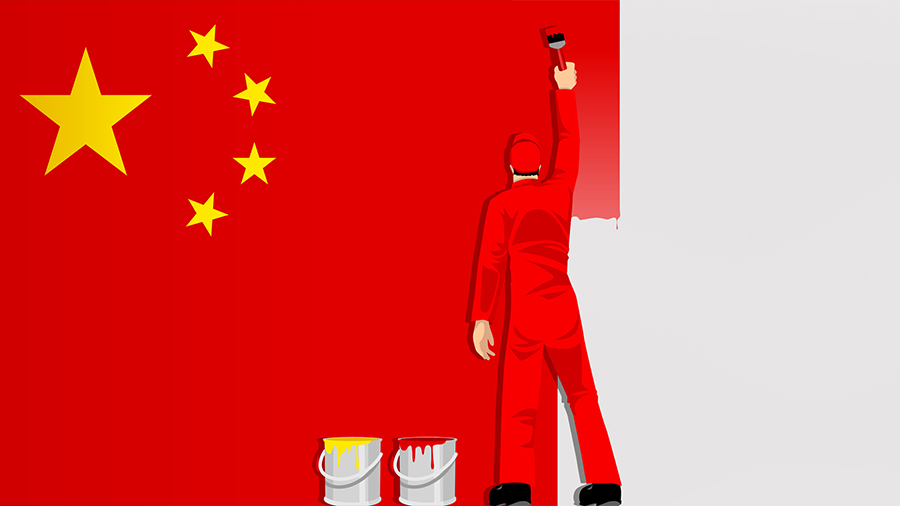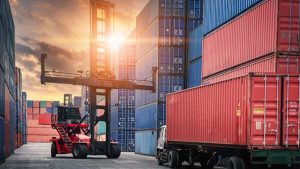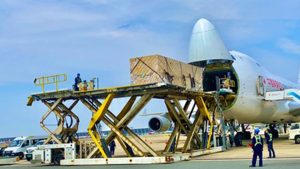China’s SOE Reforms Continuing with Foreign Investment, Management Restructuring, and Global IPOs

Greater transparency and international standards are developing in China’s largest businesses.
By Chris Devonshire-Ellis & Henry Tillman
We continue to hear critics complain about large Chinese state-owned enterprises (SOEs), with most of the charges centered around a lack of transparency and/or lack of progress in privatization. However, it has been our experience that when confronted with push back over these opinions, very few people seemed to have much data to argue their opinions, and especially when used as political debates.
To counterbalance this, at our Asia Investment Research JV, we have researched the real situation as concerns SOE reforms and illustrated this with pertinent case studies. What we have found is a systematic, well-thought series of reforms that have been underway since 2003, gradually leading to a conclusion in 2013 when Chinese President Xi Jinping outlined ambitious reform plans at the Third Plenary Session. Consistent with previous policies, the meeting reemphasized the transformation of SOEs into modern corporations by introducing mixed ownership, hiring professional managers, establishing boards of directors, and authorizing them to make market decisions.
Xi also proposed to shift the role of the government from the management of state enterprises to the management of state capital. This meant that the government could allocate state capital towards strategic industries while reducing direct intervention within the day-to-day operations of SOEs.
In 2015, a major SOE reform policy document, the Guiding Opinions of the Central Committee and State Council on Deepening the Reform of SOEs, was released and elaborated on familiar messages from the 2013 plans. However, the document classified SOEs as “public class” and “commercial class”. Different types of SOEs were to have different supervision mechanisms, mixed ownership reform (MOR) plans, and corporate governance mechanisms. We see this model now beginning to dominate in terms of big-ticket re-structuring in China.
It has not been an easy path to take. Critics have pointed out that moves to restructure China’s SOEs, even positive ones, could damage the private sector as talent and finance flows away from this area and back into the SOEs, resulting in a return to over-blown behemoths and diminished innovation. This is why, although western governments have been impatient for Chinese reform, the process has been gradual. These are big businesses, and caution has been exercised in permitting too much change at once less unforeseen problems arise – with potentially serious financial and corporate structural problems manifesting themselves leading to industry-wide consequences. Nevertheless, the pace of reform is picking up and there are opportunities for foreign investment within them.
In this China Briefing article, we highlight three case studies.
Meanwhile the current issue of Asia Investment Research includes six case studies, including two in global logistics, and one each in construction, aviation, white goods, and a huge restructuring involving China’s State Grid. It should be noted that four of these have direct relevance to China’s Belt and Road Initiative (BRI) and can be expected to pave the way in the short and medium term for IPOs of hybrid China SOEs in other international markets. All have been announced since late 2020. The new issue of Asia Investment Research, containing all this intelligence, can be downloaded, on a complimentary basis here.
China SOE Reform 1 – The Construction Industry
Xugong Group Construction Machinery Co., Ltd

Xugong Group Construction Machinery Co., Ltd. (Xugong) is a core business of the Xuzhou Construction Machinery Group Co., Ltd (XCMG).
Xugong is an SOE reform “double-hundred enterprise”, the first batch of mixed-ownership reform pilot enterprises in Jiangsu Province. It ranks number one and number three respectively withing the domestic and global industry, number in four among China’s top 100 machinery industry companies and number 409 among the world’s top 500 brands.
XCMG’s route to mixed ownership took 15 years. Since its founding in 1989, it had been owned by the city government of Xuzhou. In 2005, Carlyle Group agreed to purchase an 85 percent stake for US$375 million in cash. However, the proposed deal was blocked for numerous reasons. Carlyle made several attempts to restructure the deal before it was finally abandoned in 2008.
In July 2020, Xugong was officially announced as a mixed-ownership state run enterprise. The announcement stated that the company will introduce strategic investors through stock transfers and capital increases, which still left the provincial government with a 51 percent stake. Strategic investors and employee stock ownership platforms (2 percent) will hold the remaining 49 percent stake. Several sources stated that major western investors, including BlackRock, Harvest, Vanguard, the Florida State Board of Administration and Norges Bank Investment Management, had acquired a (combined) 9 percent stake. On 15 December 2020, Xugong announced the sale of a 10.5 percent stake to GIC (Singapore) and CITIC Private equity for US$2.25 billion.
The GIC/CITIC deal would make the two investment institutes Xugong’s single biggest shareholder among a dozen new investors (not yet named), which will own a total of 46 percent of shares. Xugong will then inject US$2.1 billion in assets into Shenzhen-listed XCMG – of which it owns 38 percent – which recorded 2019 revenues of US$2.4 billion. Xugong will be dissolved after shareholders receive XCMG stock. Xugong intends to complete the process by the end of 2022.
China SOE Reform 2 – Logistics
China Logistics Group
 In early December 2021, China announced the launch of a new state-owned logistics group, China Logistics Group (CLG), designed to strengthen domestic and global supply chains amid widespread disruptions caused by the pandemic. CLG is to become a “global supply chain organizer” by developing international trade links and freight services, as well as cross-border e-commerce. CLG was formed through a merger of several companies dealing in material storage and transport, international logistics and logistics packaging: China Railway Materials, China National Materials Storage and Transportation Group, Huamao International Freight Limited Company Shenzhen Branch, China Logistics, and China National Packaging Corporation.
In early December 2021, China announced the launch of a new state-owned logistics group, China Logistics Group (CLG), designed to strengthen domestic and global supply chains amid widespread disruptions caused by the pandemic. CLG is to become a “global supply chain organizer” by developing international trade links and freight services, as well as cross-border e-commerce. CLG was formed through a merger of several companies dealing in material storage and transport, international logistics and logistics packaging: China Railway Materials, China National Materials Storage and Transportation Group, Huamao International Freight Limited Company Shenzhen Branch, China Logistics, and China National Packaging Corporation.
CLG currently covers 30 Chinese provinces, is present across five continents, and operates three million vehicles. CLG also has property rights on 24.3 million square meters of land, owns 120 designated railway lines and has 42 futures delivery warehouses.
China’s State Council/SASAC and CLG each hold 38.9 percent of the shares, while the three strategic investors, all publicly listed organizations and global brands, hold the remaining 22 percent: China Eastern Airlines (10 percent), COSCO Shipping (7.3 percent), and China Merchants Group (4.9 percent).
The merger comes at a time when the pandemic continues to disrupt global supply chains, especially in Chinese ports, where even one positive COVID-19 case can result in operations being suspended. It also represents the next set of steps needed to reduce the operating performance gap between Chinese logistics costs and those of other major countries – a current price competitive differential of about seven percent.
China SOE Reform 3 – Aviation Logistics
Eastern Air Logistics

In June 2017, China Eastern Airlines Group (China Eastern) announced an agreement with private investors Legend Holdings (China) Global Logistic Properties (Singapore), Deppon Logistics (China) and Greenland Financial (China), as well as a representative of its core staff team to diversify the ownership structure of EAL by selling a majority stake.
EAL is the integrated service business of air logistics, which integrates business functions such as air express transportation, cargo terminal operation, multimodal transport, warehousing, cross-border e-commerce solutions, inter-industry project supply chain, aviation special cargo solutions, and direct origin solutions.
At the time, EAL had not been performing well. In the deal, China Eastern kept only 45 percent of EAL holdings, while the four private firms held 45 percent of shares (25 percent by Legend Holdings, 5 percent by Greenland, 10 percent by GLP (Singapore) and 5 percent by Deppon Logistics). EAL’s core staff team held the remainder 10% (125 workers bought the shares, with the general manager holding less than 1% stake for his RMB 30 million (US$4.4 million) of stock. The move marked an important step for SOE mixed ownership by attracting private investors. It also helps EAL to be able to complete with Fedex and UPS.
In 2019, EAL submitted plans to list that year, but elected not do so. In 2020, the company was able to obtain new capital from the proceeds from a large capital raise by its parent, China Eastern Airlines. By the end of 2020, China Cargo Airlines, a subsidiary of EAL, operated 10 cargo planes and 725 passenger planes. Through its partnerships with SkyTeam, the route network reached 1,036 destinations in 170 countries around the world. EAL has 17 self-operated cargo terminals and covers 12 airports. Among them, Shanghai Pudong Airport and Shanghai Hongqiao Airport are the main bases of EAL. Shanghai Pudong Airport is the third largest airport in the world in terms of cargo and mail throughput.
Financially, EAL made considerable progress from 2016 to 2020. Operating income nearly trebled from RMB 5.8 billion (US$913 million) to RMB 15.1 billion (US$2.4 billion), total profit increased from RMB 485 million (US$76 million) to RMB 3.6 billion (US$566.9 million), the asset liability ratio decreased from 86 percent to 37 percent, and net assets by nearly seven times.
Clearly EAL performed very differently from under its prior ownership. In June 2021, EAL was listed on the main board of Shanghai Stock Exchange (SSE), issued “the first share of MOR of aviation”. It soared 44 percent on listing day and its share price reached the upper limit of RMB 22.7 (US$3.55) per share at the SSE. EAL’s IPO came at time when the demand for air cargo had not only recovered from the COVID-19 pandemic but had also continued to grow. EAL has also been an active transporter of vaccines and other important materials.
The company flies to more than 20 countries and has operated all kinds of pandemic prevention-related flights, transporting more than 70,000 tons of medical materials. This shows how EAL – one of the first MOR pilot businesses in the country and the first from the civil aviation sector – has gone through the “three-step” reform journey (equity transfer, capital increase (2017) and listing) in a manner beyond-expectation and grown into a public company.
Summary
While these case studies do not represent a large sample of all Chinese SOEs, most are global brands and did in fact achieve considerable progress in achieving mixed-ownership status since Q4 2020.
Many of these are directly linked to cash-flow generating global business models as the BRI alters its makeup to develop sustainable service businesses on top of the infrastructure build. With 144 countries now signed up to the BRI (the latest, joining just last week, being Syria and Nicaragua) it is clear that China is intent on investing in and positioning itself as a ”global supply chain organizer.”
This means continuing SOE reform, and opportunities for foreign investment developing international trade links and freight services, as well as cross-border e-commerce. In addition to domestic strategic, institutional, and PE investors, these transactions also attract investment from ASEAN strategic investors, major PE funds, and sovereign wealth funds, as well as institutional investors from North America, the EU, and the UK.
The financial markets in 2022 will continue to pose challenges, but we believe that there will be increased activity in this segment – maybe not at the pace western governments want – but it is in the process of moving and can be a model for countries – such as Pakistan, Russia, and Uzbekistan to mention just three – as they begin to privatize their own SOEs.
Related Reading
About Us
Henry Tillman is the Chairman of China Investment Research. Chris Devonshire-Ellis is the Chairman of Dezan Shira & Associates. Their Joint Venture publication, Asia Investment Research, can be accessed here and enquiries sent to info@asiainvestmentresearch.org.
- Previous Article China veröffentlicht die Digital-Yuan-App – Was Sie wissen müssen
- Next Article A Close Reading of China’s Fintech Development Plan for 2022-2025








